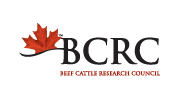Enhancing forage productivity in silvopasture systems
| Project Code: | FRG.20.17 |
| Completed: | In Progress. Results expected in March 2021. |
Project Title:
Evaluating the potential for increased forage productivity in mid-rotation forested rangeland sites through an integrated forage, cattle and timber management approach
Researchers:
Lauchlan Fraser, Ph.D. lfraser@tru.ca
Lauchlan Fraser Ph.D., David Hill Ph.D., John Church Ph.D. (Thompson Rivers University); Lisa Zabek, (British Columbia Ministry of Agriculture); Harold Hetherington, Kevin Derow (British Columbia Ministry of Natural Resources); Grant Glessing (Tolko Industries Inc); Kevin Boon, (BC Cattlemen's Association)
Background:
Forests are an important grazing resource in many areas, especially where logging occurs. Forage production declines as trees age and block the sunlight the forage crop needs to thrive. This usually happens around 20 or 30 years after an area’s been replanted, followed by 40 or 50 years of poor forage production until the trees are large enough to harvest. In silvopasture systems, trees are harvested in strips or rows so that more sunshine can reach the forage in the unforested strips. This allows the forage to grow better, benefitting both the cattle and wild ungulates. More sunshine reaches the sides of the trees that remain standing, so they grow better too.
Objectives:
To assess the potential for silvopasture, created in mid-rotation conifer stands, to enhance forage productivity (yield and quality), timber productivity, and inject additional forage into the forest-grazing landscape. Co-benefits such as carbon sequestration, plant diversity and soil water availability relative to conventional management strategies will also be evaluated.
What They Will Do:
This project will be done at three BC sites dominated by lodgepole pine and pinegrass. The 4 treatments used will be an unlogged control, conventional thinning, 7.5 m wide strips, and 15m wide strips, followed by forage establishment. They will monitor forage and timber productivity, plant composition, total carbon, above- and below-ground wood density, tree density, and soil moisture availability, forage quality, and timber productivity. Aerial images will be used to assess vegetation cover and composition. Carbon sequestration, soil bulk density, soil moisture, temperature and understory species diversity will also be evaluated.
Implications:
This project will evaluate the potential for integrating strip logging and grazing to realize environmental benefits of reduced soil erosion and faster habitat recovery on logged sites, accelerate tree growth, improve forage yields, and benefit both the ranching and lumber industries across Canada.








